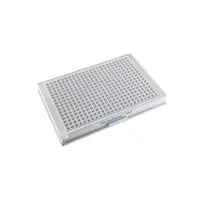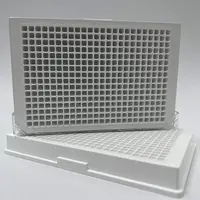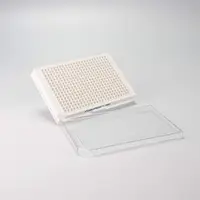
AlphaLISA Human LC3B Detection Kit, 5,000 Assay Points

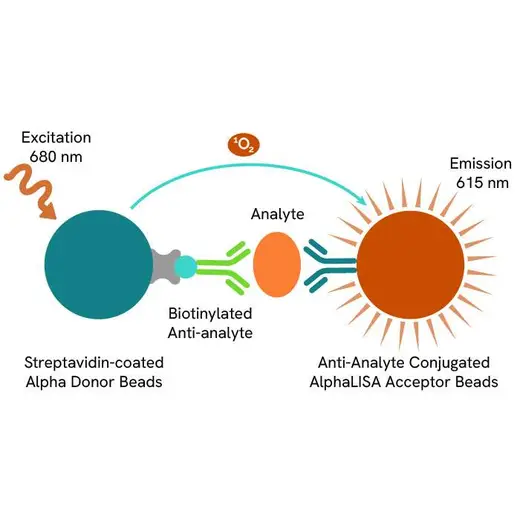
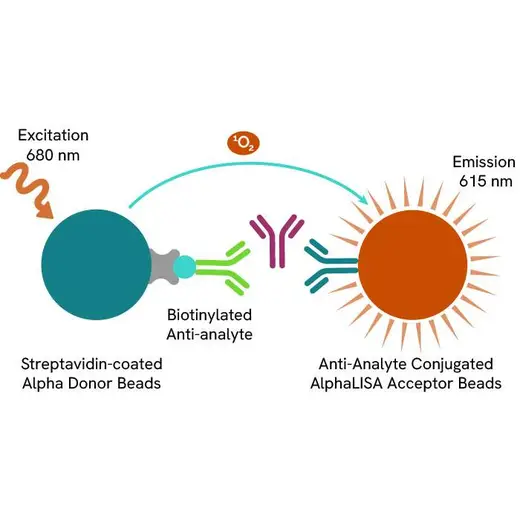











AlphaLISA® no-wash immunoassay kit for detection of human LC3B in buffered solution or cell lysates. The antibodies in the kit detect both LC3B type I and type II. The analyte in this kit consists of recombinant LC3B fused to His-tag at the N-terminus.
For research use only. Not for use in diagnostic procedures. All products to be used in accordance with applicable laws and regulations including without limitation, consumption & disposal requirements under European REACH regulations (EC 1907/2006).
Product information
Overview
Formats:
- Our 500 assay point kit allows you to run 500 wells in 96-well or 384-well format, using a 50 µL reaction volume (5 µL of sample).
- Our 5,000 assay point kit allows you to run 5,000 wells in 96-well or 384-well format, using a 50 µL reaction volume (5 µL of sample).
Features:
- No-wash steps, no separation steps
- ELISA alternative technology
- Sensitive detection
- Broad sample compatibility
- Small sample volume
- Results in less than 3 hours
- Half the time of an ELISA assay
LC3 represents a mammalian homologue of the yeast autophagy related gene ATG8. It was originally characterized as light chain 3 of the microtubule associated protein 1 (MAP1LC3). The protein family consists of LC3 A, B, and C and the GABARAP subfamily. Human LC3B is 125 amino acids long. After synthesis, it is cleaved by ATG4B to expose a C-terminal glycine, representing the cytosolic form LC3B I. During autophagy the C-terminus is covalently linked to autophagosomal vesicle membranes via a phospholipid anchor and this form is called LC3B II. The transformation of LC3B I to II is mediated by a ubiquitination-like process involving ATG7 (E1), ATG3 (E2) and the ATG16L complex (E3). To date, LC3B is considered as the most persistent marker of the autophagy pathway.
AlphaLISA technology allows the detection of molecules of interest in a no-wash, highly sensitive, quantitative assay. In an AlphaLISA assay, a biotinylated anti-analyte antibody binds to the Streptavidin-coated Donor beads while another anti-analyte antibody is conjugated to AlphaLISA Acceptor beads. In the presence of the analyte, the beads come into close proximity. The excitation of the Donor beads causes the release of singlet oxygen molecules that triggers a cascade of energy transfer in the Acceptor beads, resulting in a sharp peak of light emission at 615 nm.
Specifications
| Application |
Protein Analysis & Detection
|
|---|---|
| Assay Points |
5000
|
| Assay Target Class |
Protein
|
| Automation Compatible |
Yes
|
| Brand |
AlphaLISA
|
| Detection Method |
Alpha
|
| Experimental Type |
In vitro
|
| Format |
Microplates
|
| One Unit Contains |
5000.0 assay points
|
| Shipping Conditions |
Shipped in Blue Ice
|
| Unit Size |
5,000 Assay Points
|
Image gallery












Video gallery


Resources
An in-depth review of molecular and cellular pathways
The maintenance of proteostasis, the biological mechanisms that control the...

SDS, COAs, Manuals and more
Are you looking for technical documents for this product. We have housed them in a dedicated section., click on the links below to explore.


How can we help you?
We are here to answer your questions.
































